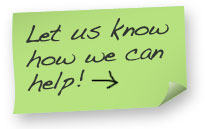 The setting: A buffet line at a Silicon Valley VC pitching event. An entrepreneur, not on the program, recognized me as a VC who had heard his pitch before.
The setting: A buffet line at a Silicon Valley VC pitching event. An entrepreneur, not on the program, recognized me as a VC who had heard his pitch before.
The action: The entrepreneur drags me out of line, insists that I see his demo, NOW!!, and corrals me into a corner, balancing his laptop on a stack of cartons.
“Ok, you’ve got my attention,” I sigh, with more than a hint of annoyance. He launches into a demo of a complex app doing who knows what on screen.
“See,” he says, “it all works, just like I told you it would!”
“Uh…,” I sputter, “what exactly am I looking at?”
“My app,” he says, “the one I told you would revolutionize multi-application business collaboration!”
In his mind, simply witnessing his demo will instantly convert me from a skeptic into an investor. In my mind, I can fake an urgent call (the surest way to flee a tedious demo) or be polite and suffer in silence. Holding a lunch tray, I can’t readily grab my phone, so, once again, I resign myself to the latter course—death by demo.
Techno-idealist CEOs are convinced that app goodness, once demoed, is irresistible. Hence the plaintive cry: “please, please watch my demo and you’ll see why we’ll be the next Facebook.” But most demos rarely impress. And a truly bad demo can kill the deal, because it reveals—up close and personal—the CXO’s inability to market, sell, communicate, or understand how to build a business. (Please note that even great demos rarely, by themselves, make the sale to investors. But they can create enough interest to start an investor dialog.)
So what’s the roadmap for giving a dynamic demo that increases interest rather than sends investors diving for their iPhones?
- WWSJD? What would Steve Jobs demo? As Steve illustrates, your demo should reinforce your larger business story and brand. Please tell me how what you’re demoing is different from all the other stuff that seems to be just like yours. And don’t forget to tell me why these differences are important to your target users. Make just a few key points and repeat them for emphasis. And don’t show me every feature.
- While you log on, I log off. Every OS and many apps have some form of security log-in. So, unless you’re demoing some brand-new log-in technology–and that’s the focus of your company– skip walking me through your log-on. Just show me the app. Get to the point–or you’ve just wasted 30 seconds of the two to three minutes I’m likely to give you at a trade show or venture event.
- Tell & Show, don’t Show & Tell. Tell me what I’m about to see before you show me. And tell me why what I’m about to see is important to your customers. What should I look for during the demo? Then tell me again what you just showed me and reinforce why it is important to your customer.
- Make my jaw drop . . . or stop. Quickly take me to the point in the demo when your customer’s jaw drops. When does a client or user stop you and gasp, “OMG. I’ve got to have this!” Why is this the point in the demo when awareness turns into product lust? “What,” you say, “we don’t have a jaw-dropping moment?” Maybe you ought to rethink your demo…or your product.
- The bottom line: leverage the power of story-telling. Tell me a story. Give me a context for viewing your demo. Show me a day in the life of the user. Or give me a meaningful use case. Otherwise, the demo is just mouse clicking lacking that bigger picture which creates meaning, stickiness, and impact.
Takeaways
- A compelling story helps create a compelling demo. Unfortunately most demos, and probably yours too, are boring. Show me how you’re solving a big, important problem. Make me care about the problem and I’ll probably end up caring about your demo.
- Unleash your inner Steve Jobs. Watch how great performers give compelling demos. There are plenty of excellent online demos to watch and emulate.* So learn from the best. And practice by recording yourself giving the demo. Be as critical as possible.
- And…don’t ambush my lunch.
Happy demoing!
* Among the demo resources available to entrepreneurs, I’d recommend: http://www.secondderivative.com/ and the work of Mary Etta Eaton at Stanford University: http://www.linkedin.com/in/maryettaeaton1
Image Credits:http://www.eurastro.de/iya/galileannights, J. Marot-Lassauzaie, G. Tomezzoli.



